Russell
New Zealands first Capital:
Russell
- Before the Europeans came here was a fortified Ngapuhi village and the iwi permitted this spot to become a European settlement: quickly it became a magnet for fleeing convicts, whalers, enterprising prostitutes and drunken sailors: at that time, it was called kororareka
- By the 1830s dozens of whaling ships at a time were anchored in the harbour and in 1839 Charles Darwin described it as full of the “refuse of society”. They called it “the hell hole of the Pacific”, it was famous for its unruly population - not today: now it is a Victorian atmosphere with weatherboard style colonial buildings gorgeous seaside town with 720 people living
- In 1830 here was the girl war when two pairs of moari women were vying for the attention of a whaling captain: this minor conflict escalated and hundreds were killed and injured over a two-week period before the missionaries managed to broker a peace agreement
- It was the nation’s first capital and it was the 1st European settlement: it still has some of the layout as in 1843 with many historic buildings
We take the ferry
No question, the history and also
the lure of one of the nicest beaches in the area we need to visit this
peninsula and to go there we drive south of town to Opua and take the ferry
over. There is a sign as there are two ways to go either the 10 Min ferry ride
or a one-hour drive around the bay. But first we get stopped by the police: and
Paul gets asked like everyone if he was drinking this morning and had to do a
breath test – all is fine. As we come close, we line up behind the other cars
during beautiful sunshine, it is super easy, there are no schedule, they have
two ferries one in each port, they load and unload constantly and you pay on
the ferry (no they are not very big). And then you set sail. It was really
pretty to look out on the bay – I think that we were the only once leaving the
car and checking out the view.
The Old Mission
Our first stop was at the
Pompallier Mission from 1842, we only walked on the waterfront to it and looked
at it from the outside, because we have to much else, we want to see and
thought we save ourselves the money.
- Here they translated church texts from Latin into Maori language and printed them (they printed over 40.000 books here)
- this catholic mission house with its nice garden and harbour views is NZ’s oldest industrial building.
We decided to walk from here along
the waterfront to check out the famous old Russell. What we liked are the super
cute white wooden Victorian buildings, as well as the nice trees they planted
along the waterfront. At one time we see an old cannon looking super cute with
the ocean in the backdrop.
- the cannon came in an unseaworthy ship in 1840 and then got installed on Maiki Hill
- in 1845 it was used to defend the city against the Ngapuhi chief Hone Heke & came to it present spot in 1917
New Zealands unique trees?
We did see those cool trees
everywhere and didn’t know what they are, except looking amazing. Now here they
put a plaque, because those trees were planted in 1930 by a school to beautify
Russell.
- Both the Pohutukawa and the Rata Tree are sacred to the Maori and have an important place in NZ’s culture
- They are the best-known native trees in NZ
The Pohutukawa Tree:
- It is New Zealands Christmas tree: because around Christmas it flower in red (it’s from the Myrtle family)
- At Cape Reinga is a small wind-beaten tree clinging to the cliff and this 800 year old tree guards the entrance to the afterlife
- It is regarded as the Chiefly tree because of its strength and beauty
- They usually grow as multi-trunk spreading tree, which are sometimes festooned with matted fibrous aerial roots
- It grows in coastal regions on the North Island & is also called a cliff dweller as it can grow in a nearly vertical situation
The Rata Tree:
- Rata was respected for its immense size which provides shelter for the weary traveller
- It is a forest tree and grows over 25 m tall
- They start their life as a hemi epiphyte high in the branches of a mature forest tree, the young tree sends root down and around the trunk of the host tree
V8 Trike JD
Then we need to stop because we
see this Trike: and we learn they are JDavidison, he built them here in New
Zealand – 16 of them. When he wanted to expand to the Australian market, he got
bankrupt. Today, there are only those 16 models. And they are classified as a
car – so you don’t need a helmet. They have V8 engines and nearly all of them
are used to drive around tourists. They have V8 Chevy engines, some parts of
the Corvette and are made of fiberglass. The one here has 3 seats, in Taurange
they have some with 5 seats. The guy was super nice and started it up so Paul
could hear the engine as well Paul was allowed to sit in it so we could take a
picture – now that is one cool vehicle.
Along the historic waterfront
We then continue more along the
waterfront – which is super pretty, with a nice Maori carved archway towards
the wharf, more old Victorian buildings. Really cute one of the restaurants had
super cute tables and chairs, one house had a sign on the outside which stated
that it was from 1860 but even more impressive was the huge tree near it.
Wow!!!
Tamati Waka Nene
We then went a small little
walkway down to come to more Maori totems and another arch, there was this
Maori chief 1780s-1871, living here and those carved pou’s are the points of
illumination of his life: his father, his mother and his birth into Maori life,
then his training, initiation and prowess in hapu and iwi wars, as well one is
the Declaration of independence and one the treaty of Waitangi and his promise
to support the British crown
The Pare (or the gate) shows him
as a peacemaker, negotiator and kaumatua: yes we talk about Tamati Waka Nene: Interestingly
there is a small brick corner left, which was from his cottage chimney when he
lived here in 1866. I thought it was super cool.
The Whaling Boat
We are at the museum of Russell
and on the outside they have a boat they used for going whaling – I think it is
not a very big boat at all.
- In the early 1800s there was a market for whale oil so many came to hunt them in the Southern Ocean. Many came for 2-3 years from Europe or North America
- Kororareka (Russell) was a favorite port, this brought a lot of Pakeha (non-maori) here
- Sometimes up to 30 boats were anchored in the bay
- The one we saw was used as a whale boat, then it became a “ferry” and in 1910 they added a motor to it and it became a “school boat” to bring children from Waitangi, Paihia and Waikare to the Opua school, it also brought supplies to Pahia because there was no store there until the 1930s
- How did whaling work: when the ship saw a blow, they send a Whaling boat like this with a crew of six into the water to go close to the whale: they then waited and then when it came up plunged iron spikes into the whale attached to a rope. The whale most of the time double the length of the boat would trash until it died and float to the surface. It happened that the whale trashed the boat and all men ended up in the sea
Flagstaff Hill / Te Maiki
Next stop is up of Flagstaff Hill,
you should think it is easy to drive to the parking lot (by the way they call
them here car park). This turnoff is in the middle of a steep uphill u-turn and
a small entrance – really!!! Whoever designed that didn’t expect a lot of
traffic. But we made it up and we went up to the two viewpoints
The first one was to give us more
information about the Maori living here, when Captain cook came, the Whalers,
about James Busby (the first governor) and Waitangi
I may should mention here is all
in dual language English and Maori
Flagstaff: here was the first flag
of New Zealand hang up in 1834 and today there is still a flagpole and it is a
truly amazing spot with amazing views – this is a truly amazing spot.
- The Te Kara Flag was the flag of the united tribes and when it was hung in 1834 it was to acknowledge that New Zealand is a Maori state (James Busby helped design it)
- As soon as the treaty was signed, they moved the flagstaff from Waitangi and brought it to Te Maiki and it became a signal for the ships and the Union Jack was hoisted up in Waitangi: this led to the first disagreement
- Also the British took control over the land, the trees and the taxes
The Northland War and Hone
Heke:
- In the eyes of the Maori chiefs the British challenged their authority and sovereignty – like they took control of the sale of Maori land, put restriction on the Maori tree felling, so they no longer could cut their own trees, added customs taxes
- The Rangatira (chief) Hone Heke led a protest movement that was centered on the flagstaff, in 1844 he cut down the flagstaff. Not all chiefs supported it and some re-erected it. Heke and his protesters continued and in Jan 1845 the flagstaff got felled again: this time by Heke himself. The governor re-erected it and Heke felled it again
- Heke wrote a letter to Fitzroy the governor to remind him, that the flagstaff belonged to Heke and had been intended to fly at Te Kara
- Tamati Waka nene, was also a leader and a good mediator and he played a key role in the peace talks after the Flag war (yes we were at his cottage earlier and saw the totems about his life)
- The British took increase measures to protect the flag staff built a house for 20 soldiers, posted a war ship in the harbour
- In March 1845 they attacked the flagstaff: the Ngapuhi stagged a diversionary siege of the town, one chief attacked from the south and another party from the long beach, while the troops rushed to protect the township, hone heke felled the flagstaff for its 4th and final time
- The British forced to evacuate the ships lying at anchor and the cannons were fired on the town and most of the buildings were razed, the first of the NZ wars started
- Battles went on for a year- it was known as the Flagstaff war – the final battle was in Ruapekapeka in Jan 1846 (yes we visited this spot already)
- In 1858 Maihi Kawiti the son of one of the chiefs dying during the first attack re-erected the flagstaff, but the governor refused to contribute to the cost. 300 warriors run up the Te Maiki carrying a 29m tall flagstaff and called it “Unity between two people” Whakakotahitanca
- The flagstaff twice got hit by lightning, and in 1993 descendants of the Hapu who fought in the flagstaff war raised it again – this time members of the Navy and Army were present.
- In 2018 the British Crown acknowledged the flagstaff for the first time in a reconciliation ceremony at Te Maiki
- Unity is not about being the same
- You have come too far not to go further, you have done too much not to do more
- Today the flagstaff is a symbol of the journey to unity
Tapeka Point Beach
Now the fun part begins: we first
stop at the Tapeka Point beach – with some more amazing views on the Bay of
Islands, a super pretty cute little beach – but not the one we are looking for….
Long Beach
This is where we want to spend the
rest of the afternoon: they said it is one of the nicest beaches around and it
is super cool, a long stretch of sandy beach and we find a parking spot –
perfect!!! Today it is sunny and warm, and the nice breeze makes it perfect.
The ocean looks amazing with turquoise colors – wow!!! I mean the colors are
nearly surreal. Only the water is a bit cool when you go in, perfect for a cool
down… so we spend the next hours here, relaxing in the sunshine, walking along
the beach for amazing views, going up to a little viewpoint, go for a dip and
swim,…. Oh and find those amazing shell pieces. This is absolutely perfect
Christ Church
- Christchurch in Russell is the oldest church in New Zealand and got built in 1836, Charles Darwin made a donation so it could be built
- The wooden exterior has still cannonball holes from the 1845 battle
- The history of it and the surroundings is represented in colorful tapestries on cushions on the pews – everyone relates somehow to Russell (they made them from 1990-99)
- Tamati Waka Nene: his memorial says “Chief of Ngapuhi, the first to welcome the Queens sovereignty in New Zealand. A consistent supporter of the pakeha”
There is one more stop before we
head out, that is Christ Church, a super cute white church with a cemetery
around. As we walk around the cemetery Gine finds the grave of the first white
women born in New Zealand in 1816, lots of other old grave stones – it was
interesting to walk through them, like a memorial for the Tamtai Waka Nene
Chief, or the grave of Samuel and Mary Ford which were instrumental in the
Flagstaff war, or the Commander of the HMS Hazard who drowned here or the stone
in memory of the sailors of the HMS Hazard who died defending Kororareka
But what was super special, the
church was open and here we saw that every seat had a tapestry cushion – with
amazing pictures – this is so unique we never saw anything like this: animals,
ships, landscapes, names, history… that is something special (let’s hope no-one
is allowed to sit on them)
The last one on to the ferry
Now it is time to head to the
ferry and as we approach, they start loading, we didn’t think that we will make
it, but before us is a big truck and he waves us forward, and that means we are
the last car to go on. Now that is timing!! Again we enjoy the amazing views.
And we discovered the line-up on the other side was super long – at least 3
ferries – good thing we went in this direction.
We have Pizza
Tonight, we decided to have Pizza
from the Pizza shack, after a bit of a break and relax-time we are ready and
head to town to get the pizza – it is really super cool that we are so close to
the town-center (but then everything in Paihia is close to the town center). We
had two amazing days here in Paihia.

 Russell, Northland, New Zealand
Russell, Northland, New Zealand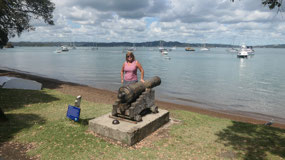


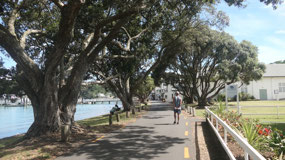
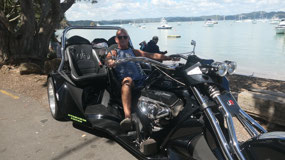
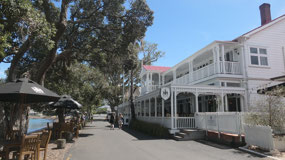
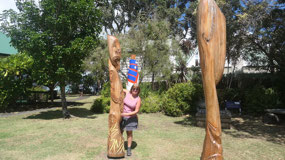
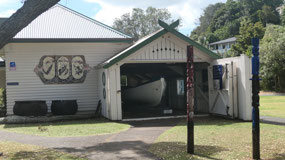
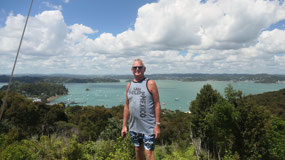
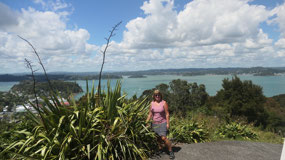
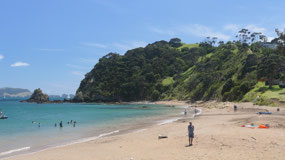

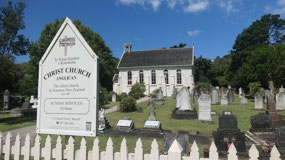
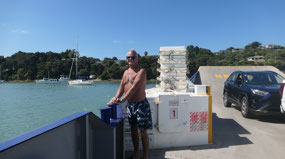
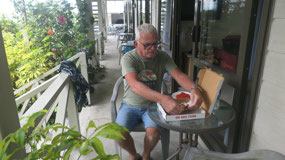


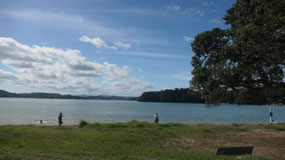
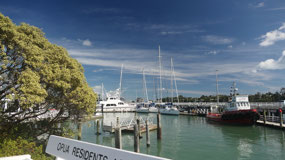
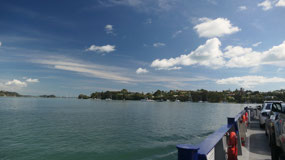
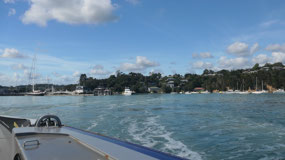
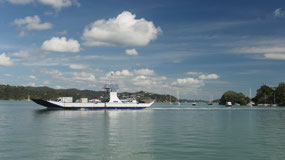
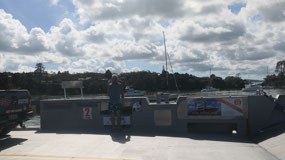
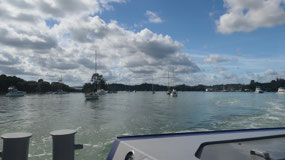

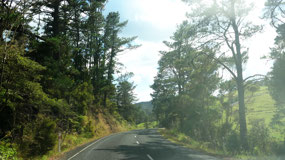

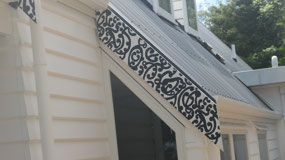
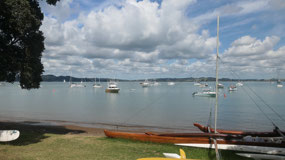
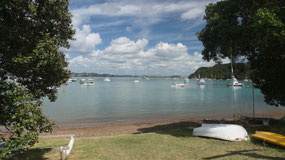

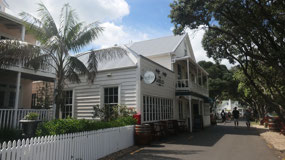
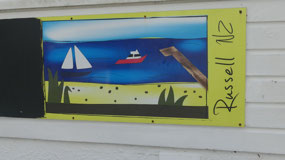
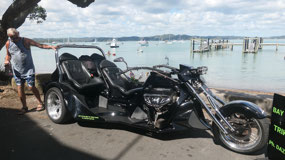
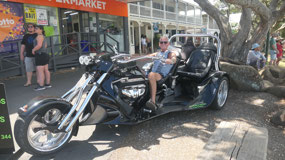
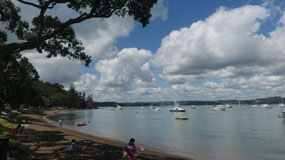

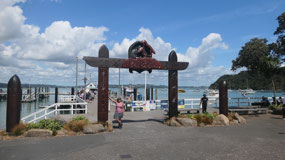
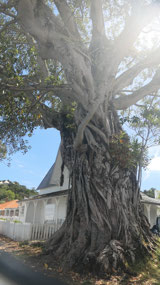
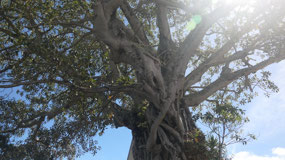
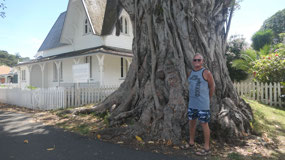
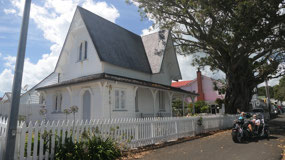
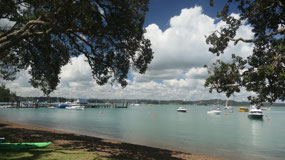
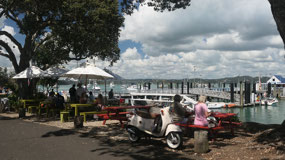
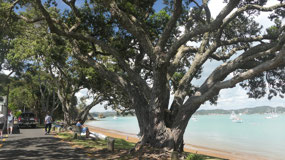
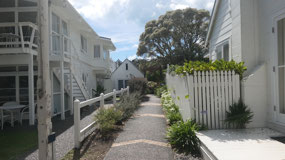
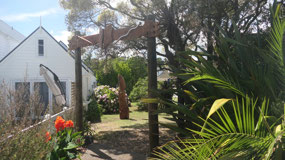
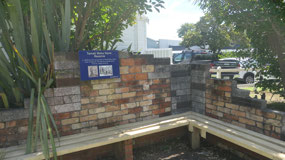
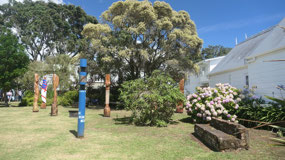
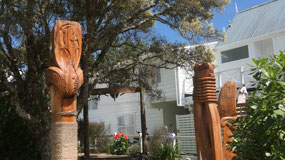
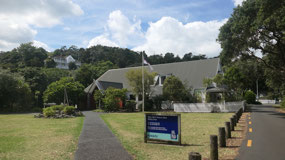

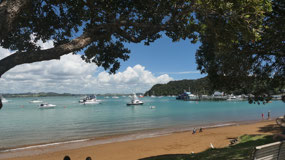
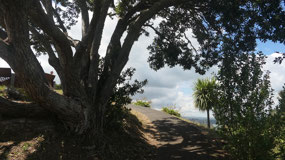
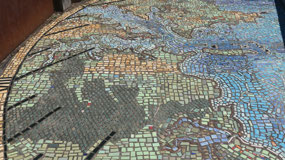
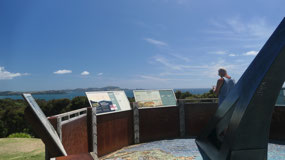
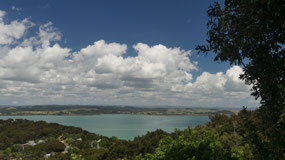
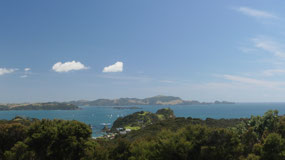

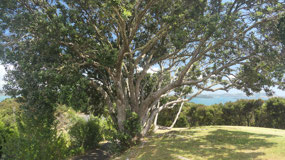
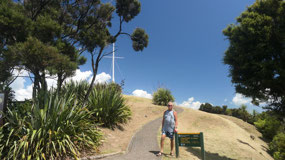

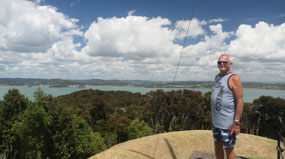
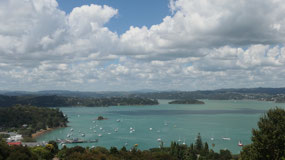

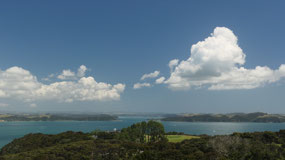
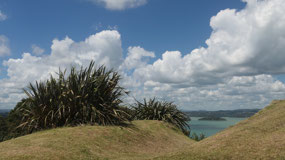
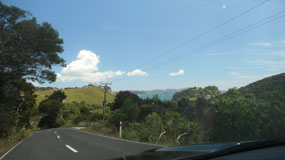
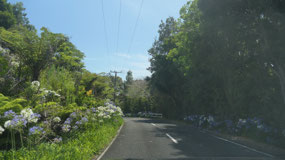
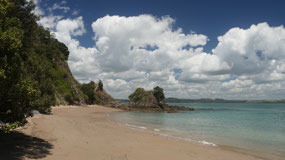
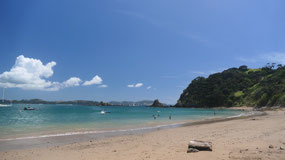
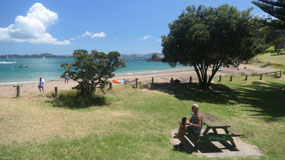
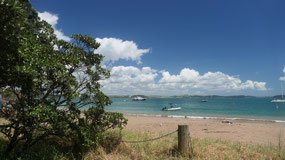
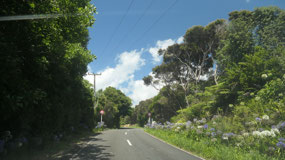
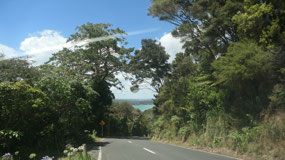
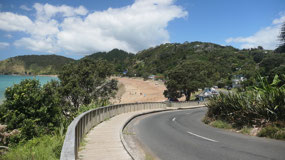
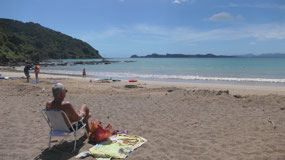

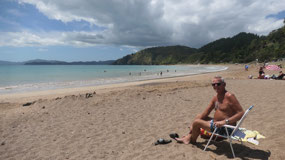
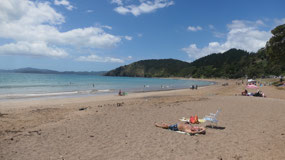
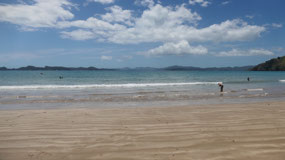
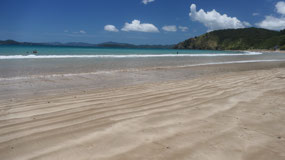
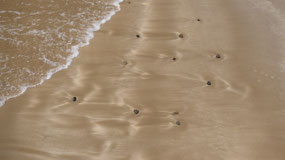
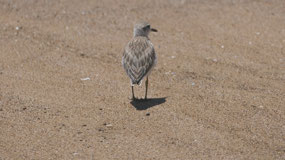
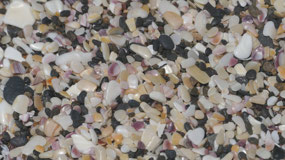
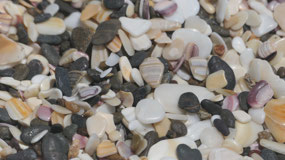
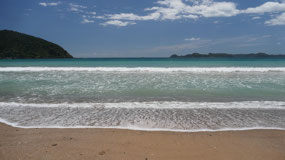
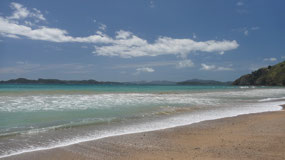
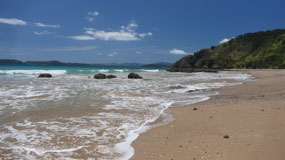
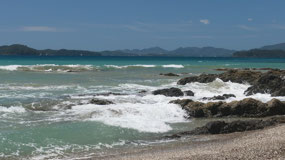
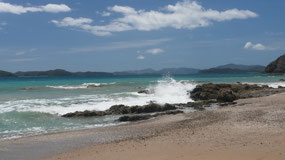
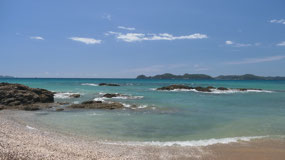


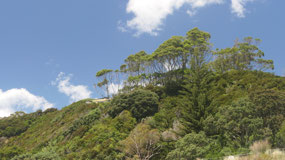
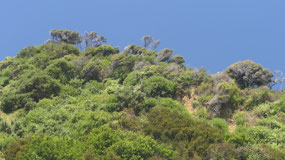
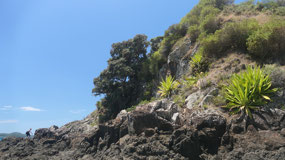
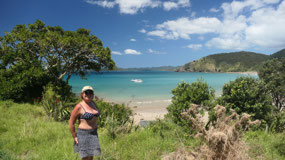

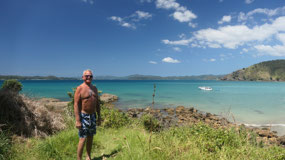
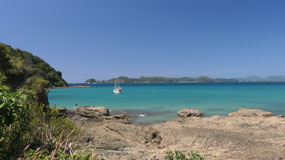
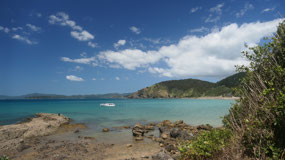
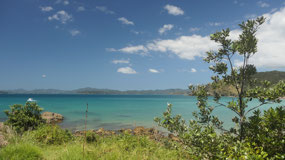
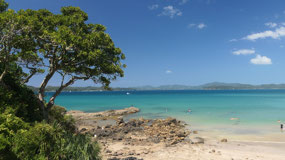
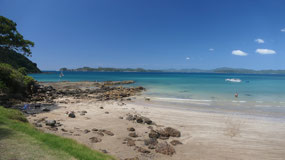
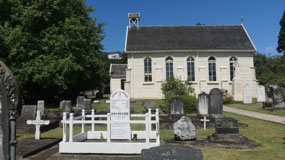
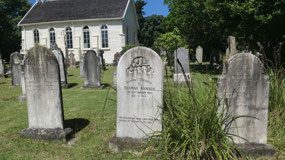

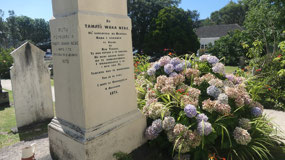
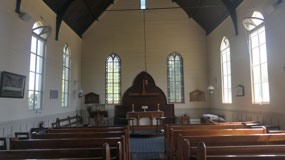
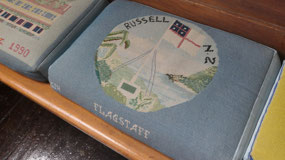

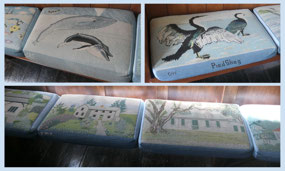
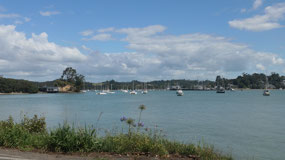

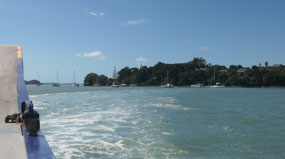
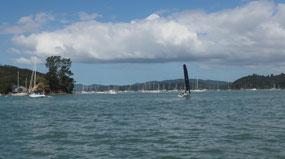
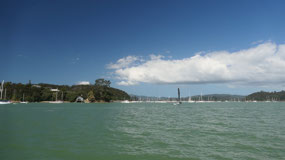
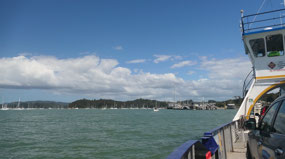
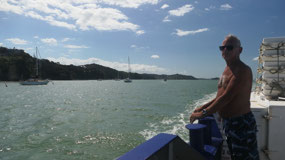
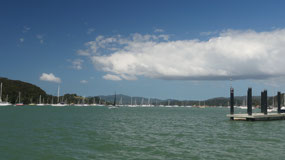
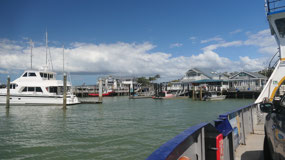
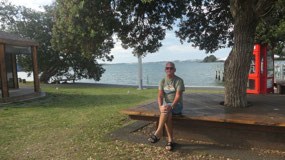
2025-05-23